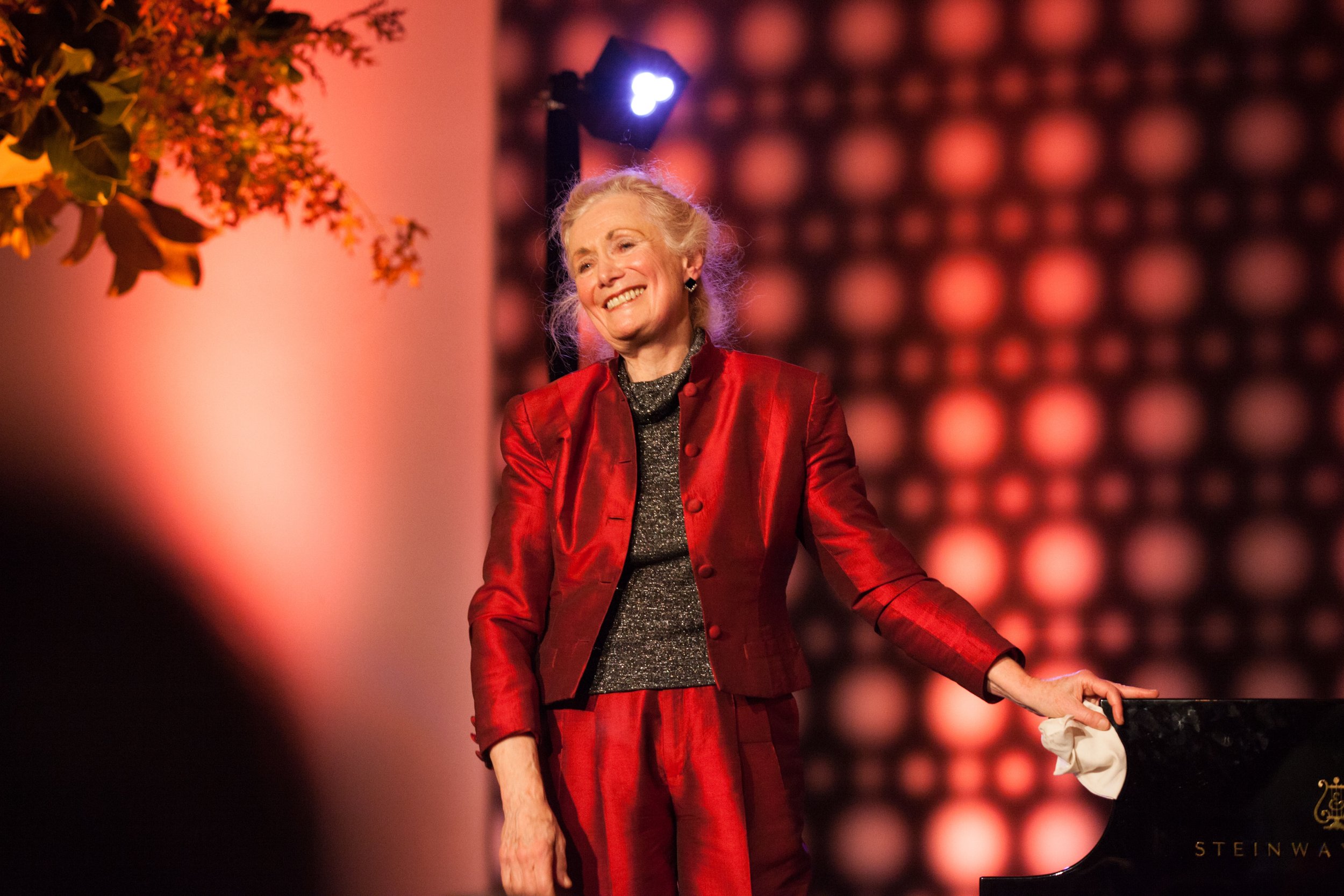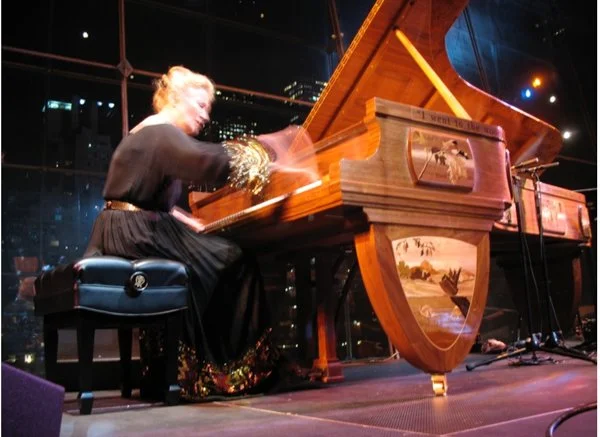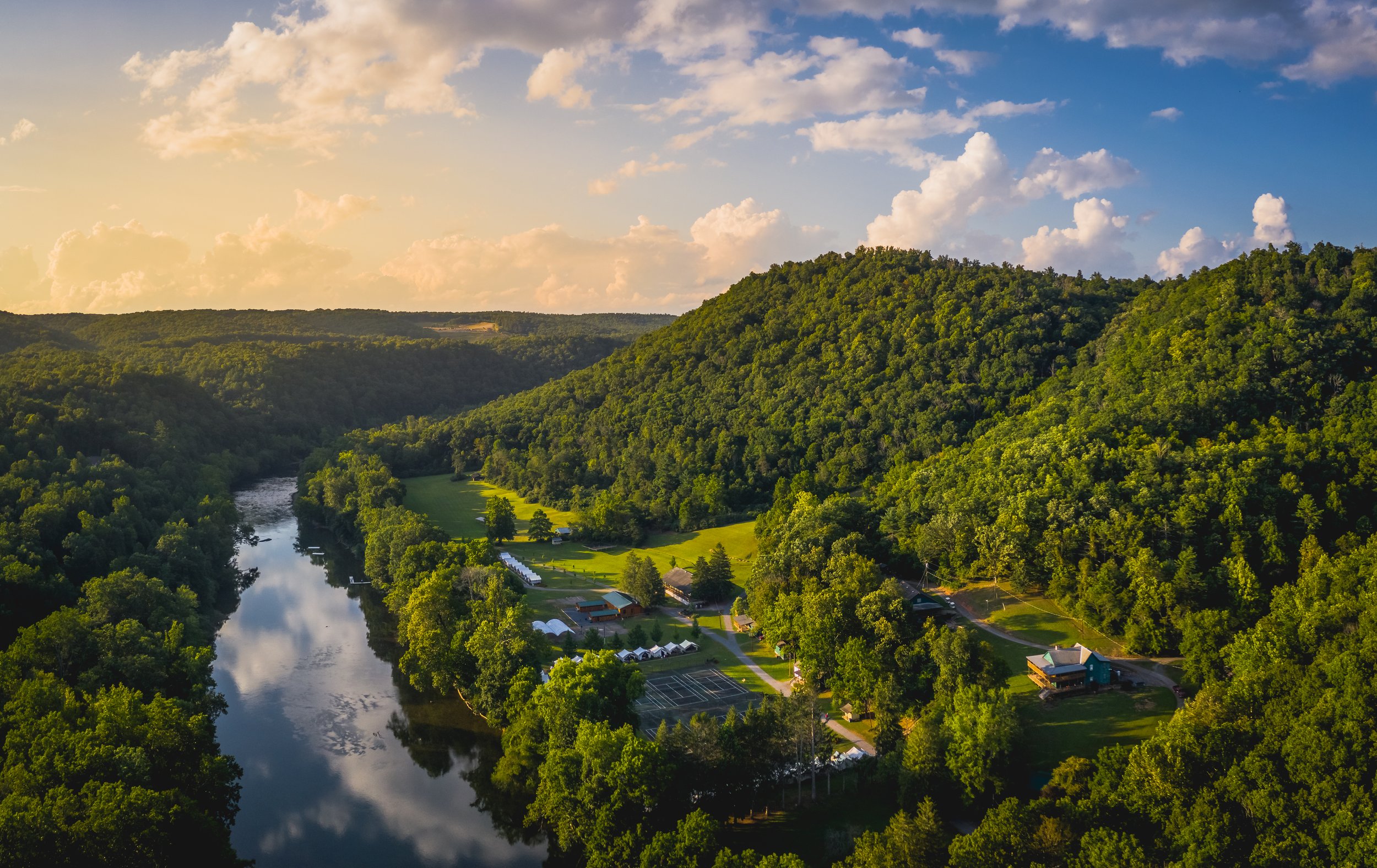Still Blooming: Catching Up with Concert Pianist Barbara Nissman

By Greg Johnson
Every summer in August, thousands of residents and tourists gather along the Prinsengracht Canal in Amsterdam, the Netherlands, for a free classical music concert. A barge draped with strings of lights is anchored in front of the Pulitzer Hotel, serving as the makeshift stage. Boaters stream in the day before to claim favorite spots and spend the night on their boats, while the landbound mass along the banks, or peer down from the windows of the hotels, galleries, businesses and townhouses lining the grand canal. The atmosphere is festive, more rock concert than classical performance. If you’re not one of the 12,000 or so who manage to make the scene, you can watch the live broadcast on national TV from the comfort of your home. Last summer an audience of 1.6 million tuned in.
On August 20, 2022 the evening’s special guest was the performer who was featured at the inaugural Prinsengracht concert forty years earlier, classical pianist Barbara Nissman. For more than three decades the renowned pianist has called Lewisburg, West Virginia, home, while recording and traveling nationally and internationally for concerts and master classes.
“I didn’t try to introduce the program in Dutch this time, like I did in 1981,” she relates. “They all speak three or four languages anyway, and English is one of them.” She likes to tell the story about the minor disaster forever associated with the first concert. “The piano mover was using a crane to move the Baldwin piano onto the barge, when it slipped and landed on top of his Volvo! It destroyed the poor man’s car, but the piano tuner decided we could still use the Baldwin if we removed the lid and retuned the instrument. So we did, and the show went on!” To this day, a grand piano is suspended from the ceiling in the lobby of the 5-Star boutique hotel in permanent tribute to the concert that launched a cherished Amsterdam summer tradition.
Nissman in Amsterdam in 1982
Nissman returns to Amsterdam in 2022
The Greenbrier Valley Quarterly profiled Barbara Nissman in a 2007 article by Eric Fritzius. A lot has happened in Barbara’s life in the past 16 years, and we decided it was time to catch up with her again. On June 3, 2023 she will be inducted into the West Virginia Music Hall of Fame, becoming the fourth classical musician honored in a museum largely comprised of country, popular and jazz artists.
When she was growing up in Philadelphia, Nissman never imagined she would end up in anyone’s Hall of Fame, musical or otherwise. “I didn’t come from an artistic family,” she admits. “My parents weren’t musicians, and I definitely wasn’t a musical prodigy. The family joke is that my first piano teacher told my mother that she was wasting her money because he thought I was never going to learn to play the piano!” But she fell in love with the sound of the instrument that became her life’s passion and work. “I was a late bloomer,” she confesses with a smile. “I’m still blooming.”
During her high school years, she commuted to New York on weekends for instruction at Julliard, but her father wasn’t in favor of sending her to a music conservatory instead of a university. He wanted her to have a well-rounded education, so she studied music on a full scholarship at the University of Michigan. She was completing her doctoral studies when a Regent of the University introduced her to Eugene Ormandy, the famed conductor of the Philadelphia Orchestra. Impressed by the aspiring young artist, Ormandy immediately contacted his European manager in Holland to arrange her first concert tour. As a result, by her mid-twenties the young pianist found herself living in Europe and touring its capitals as a performer. “My father thought I would end up teaching music,” she remembers, “but from the first time I saw Van Cliburn perform when I was 15, I knew I wanted to be a performer.” She found joy appearing as a soloist with orchestras and as a recital artist, joy that has lasted a lifetime.
After spending the Seventies based in Amsterdam, Nissman decided it was time to come home. She had the notion that every serious artist needed a New York period, so she spent the Eighties sharing a small apartment on the Upper West Side with her Steinway, playing regionally and touring. It was during this time when she was playing a memorial concert for her friend, the Argentine composer Alberto Ginastera at the Cathedral of St.John the Divine that she met the love of her life, the poet Daniel Haberman. Daniel, the Cathedral’s first poet-in-residence, developed the American Poets’ Corner at the Cathedral, a memorial to American writers modeled after a similar alcove in London’s Westminster Abbey. She performed at the dedication of the Poets’ Corner in 1984, hosted by Walter Cronkite, that also included the participation of the actor Gregory Peck and the writer Robert Penn Warren among other notables.
After their 1987 marriage the couple decided to search for an idyllic spot where they could pursue their individual artistic endeavors. They found their ideal setting on a West Virginia farm bordering a creek a few miles outside Lewisburg. They refashioned a wing of the farmhouse to serve as a writer’s den for Daniel, complete with floor-to-ceiling bookcases and a stone fireplace, and built a split-level soundproof music studio overlooking the creek for Barbara, with enough room for her pair of Steinway pianos. But the life they envisioned wasn’t to be. After being diagnosed with a terminal illness, tragically Daniel died in 1991, leaving Barbara alone in her country paradise.
Beset by grief, she found solace in the instrument that had been her best friend since childhood, and in her tranquil pastoral setting in the shadow of Muddy Creek Mountain. Over time she once again began venturing out to perform and teach master classes. Her passion for her art grew, and her friendships deepened in her adopted community, which she calls a “magical place”. She gave benefit concerts for the Greenbrier Valley Theatre and Carnegie Hall, and she helped Carnegie select a new Steinway for the Hamilton Auditorium and played the inaugural concert on it. She continues to perform occasionally at Carnegie, most recently initiating a three-part classical series this past spring.
Nissman playing the Walden Steinway Benefit at The Lincoln Center.
As time went on and she resumed her career, some interesting opportunities arose. In 1996 she performed at the Kennedy Center’s 25th Anniversary Gala Concert, broadcast on PBS. In 2003 she was one of 23 Steinway Hall of Legends pianists honored in a publication commemorating the piano maker’s 150th anniversary, alongside such notables as Van Cliburn, Harry Connick, Jr., Herbie Hancock, Duke Ellington, Sergei Rachmaninoff, Randy Newman and Billy Joel. In 2007, at the invitation of Don Henley, she took the stage at Jazz at Lincoln Center with The Eagles and Billy Joel, to perform on the Walden Woods Steinway, an instrument created by craftsmen from wood gathered from around Walden Pond. The benefit concert before a star-studded audience raised funds to rescue 150 acres of Thoreau’s iconic woodland from a planned housing development. Barbara Nissman’s autograph appears on the plate of this $500,000 Steinway, alongside those of other artists who have played it: Elton John, Dave Brubeck, Bruce Hornsby, Emmanuel Ax, Billy Joel and Herbie Hancock.
Nissman with Don Henley and Billy Joel at the Walden Steinway Benefit at Jazz at Lincoln Center
Nissman freely admits that her knowledge of pop music isn’t what it should be. When she received the initial phone call about the Walden concert from a woman who identified herself as “the personal secretary for Don Henley of the Eagles”, she thought the NFL team was trying to get in touch and she wondered, “Why are the Philadelphia Eagles calling me?” She soon learned there were other Eagles. She came away from the concert deeply impressed by them and by Billy Joel. “I really do admire him,” she says, sounding a bit like a fangirl. “Billy Joel is a serious musician.”
Artistically, Nissman is often identified as a specialist in the works of modern composers like Argentina’s Alberto Ginastera, Russia’s Sergei Prokofiev and Hungary’s Béla Bartók. While she is a recognized expert in these three composers, and has recorded and written extensively about them and often performs their works, in her heart of hearts she likes to think of herself as a pianist in the grand Romantic tradition of Liszt, Brahms, Chopin and Rachmaninoff. “I really prefer the 19th Century,” she confides. “That’s when the piano came into its glory. My artistic role models are all the great dead composers of that era, and of course Beethoven is at the top of the list!”
In a lifetime of performing and recording, Nissman has acquired an encyclopedic knowledge of the history of classical music and the people who created it. A natural teacher, she enjoys sharing her enthusiasm for the subject with young and old, educated and uneducated, amateurs and professionals. Early in her career she was hired by the John Deere Company to serve as its first Artist in Residence, lecturing and playing recitals in Deere plant communities all over the world. In England she appeared on BBC in a series called Barbara & Friends, talking about composers and their music. Throughout the course of her decades as a performer and lecturer, she has welcomed opportunities to educate the public about the unique personalities of the composers who created what we call classical music, and the genesis of their compositions.
To further this work, she created The Three Oranges Foundation in 2017. Originally conceived in 2014 as a record label that enabled her to gather her many dozens of recordings under one umbrella, she decided to expand on the idea. “I was thinking about what kind of legacy I want to leave behind as an artist, and I decided I want to leave some teaching tools for the next generation,” she explains. For the past several years, working with a team at Duquesne University in Pittsburgh, she has been creating a series of educational DVDs focusing on the musicians she admires. Each entry in the series paints an in-depth portrait of the composer, followed by inspired performances of their music. She pressed a small group of A-List acquaintances into recording voice-overs for her Franz Liszt DVD: Billy Joel, Don Henley, Harry Connick, Jr., Rebecca de Mornay and the late Stuart Margolin, among others. “I believe Liszt is a very misunderstood composer. He was a prolific letter writer, so I went back to his letters and used his words to explain the man and his music,” she describes her process.
Nissman’s ideal piano resides at Duquesne, where she records her albums with the assistance of David Barr, the school’s piano technician. Officially a Steinway artist (“Steinway is the Rolls Royce of pianos,” she strongly believes), she says she looks for a “warm rich sound” in an instrument, particularly in the bass register. In return for use of the school’s Steinway, she teaches an annual master class at the university, a barter arrangement that benefits both parties.
After a lifetime of noteworthy achievements, the 78-year-old Nissman insists she still hasn’t peaked as a performer. Not content to rest on her laurels, she feels continually driven to improve. “My constant challenge is to try to get closer to the spirit of the composer,” she shares the secret of what motivates her.
The musicians who have inspired her would undoubtedly be gratified, even astonished, to learn that, a century or two later, a gifted pianist in a studio overlooking a creek in a quiet corner of rural America has made it her lifelong labor of love to better understand their music and give surpassingly passionate performances of it before adoring audiences. Fortunately, she has no plans to slow down.
You can learn more about Barbara on her website: www.barbaranissman.com, and by reading the 2007 GVQ article about her by Eric Fritzius.








